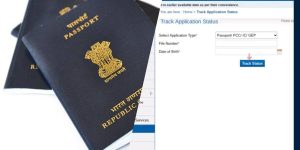If you’re a U.S. citizen planning a trip to India, obtaining an Indian Visa for U.S. citizens is your essential first step. No U.S. passport holder can enter India without a valid visa. The visa process might seem complex, but with the right information, it’s simpler than you think. The visa category you choose, whether tourist, business, e‑Visa, or medical visa, will determine required documents, processing time, and entry rules.
This updated guide simplifies everything. We’ll help you pick the correct visa type, walk you through each step of the application, and share practical tips to ensure your application goes smoothly. By the end, you’ll feel confident applying and ready to plan your Indian journey.
Indian Visas Available for US Citizens: Quick Summary
India offers 12 different types of visas to US citizens.
Here’s an overview of the most common visa types available for US citizens traveling to India:
| Visa Type | Purpose | Price | Validity | Processing Time | Application Mode |
|---|---|---|---|---|---|
| Tourist Visa | Leisure travel, sightseeing | $160 | Up to 10 years | 5-10 business days | Online/Embassy |
| Business Visa | Business meetings, conferences | $160 | Up to 10 years | 5-10 business days | Online/Embassy |
| Entry Visa (Short) | Multiple purposes | $100 | Up to 6 months | 7-10 business days | Embassy only |
| Entry Visa (Medium) | Multiple purposes | $140 | 6 months to 1 year | 7-10 business days | Embassy only |
| Entry Visa (Long) | Multiple purposes | $220 | 1-5 years | 7-10 business days | Embassy only |
| Employment Visa (Short) | Work purposes | $140 | Up to 6 months | 10-15 business days | Embassy only |
| Employment Visa (Medium) | Work purposes | $220 | 6 months to 1 year | 10-15 business days | Embassy only |
| Employment Visa (Long) | Work purposes | $220 | 1-5 years | 10-15 business days | Embassy only |
| Project Visa | Project work | $140-220 | 6 months to 5 years | 10-15 business days | Embassy only |
| Student & Research Visa | Education/Research | $100 | Course duration/5 years max | 10-15 business days | Embassy only |
| Medical Visa (Short) | Medical treatment | $100 | Up to 6 months | 3-7 business days | Online/Embassy |
| Medical Visa (Extended) | Extended treatment | $140 | 6 months to 1 year | 3-7 business days | Online/Embassy |
Do NRIs Need A Visa To Travel to India?
Non-Resident Indians (NRIs) who are US citizens or permanent residents (Green Card holders) still require a valid visa to enter India.
Having Indian ancestry or a Green Card does not exempt you from visa requirements. However, NRIs can apply for special visa categories, such as the Entry Visa, which offers longer validity and multiple entries.
Overseas Citizens of India (OCI) cardholders are exempt from visa requirements, but OCI status must be obtained separately through a different application process.
12 Types of Indian Visas for US Citizens
India offers various visa categories to accommodate different travel purposes and duration requirements for US citizens.
Once you reach the visa application portal, you will find several Visas to apply for as per your travel requirements.
1. Tourist Visa
Tourist Visa is designed for leisure travel, sightseeing, visiting friends and family, or attending cultural events and festivals.
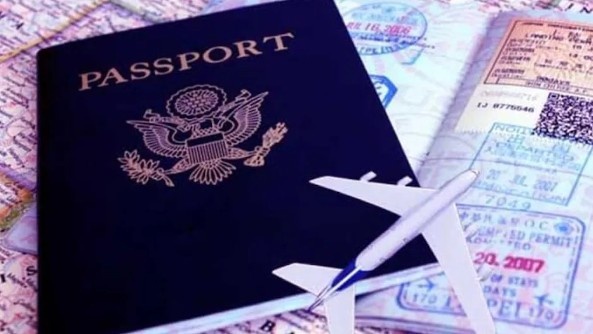
This visa allows multiple entries with validity up to 10 years, making it ideal for frequent travelers. Each stay is limited to a maximum of 180 days.
The visa covers recreational activities, casual business meetings, and short-term courses not exceeding six months in duration.
2. Business Visa
Business Visa is intended for business meetings, conferences, trade exhibitions, exploring business opportunities, and establishing industrial ventures.

It permits multiple entries with validity up to 10 years, allowing stays of up to 180 days per visit.
This visa facilitates commercial activities, attending board meetings, and conducting market research, but does not permit direct employment or regular business operations.
3. Entry Visa (Short)
Entry Visa (Short) is a versatile visa category for individuals of Indian origin, spouses of Indian citizens, or those with specific purposes requiring short-term stay. It is valid for up to six months with single or multiple entry options.

This visa serves various purposes, including family visits, property matters, legal proceedings, and other personal affairs that don’t fall under standard tourist categories.
4. Entry Visa (Medium)
The Entry Visa (Medium) is an extended version of the entry visa, suitable for stays of up to one year. It is Ideal for individuals requiring extended periods in India for family matters, property dealings, or other personal reasons.
This visa offers multiple-entry privileges and greater flexibility for those requiring frequent travel between India and the United States during the validity period.
5. Entry Visa (Long)
Entry Visa (Long) is a long-term entry visa valid for one to five years, designed for individuals with ongoing connections to India.
Entry Visa [Long] is ideal for people of Indian origin, spouses of Indian citizens, or those with established business or family ties requiring frequent visits.
This visa provides maximum convenience with multiple entries and extended validity, reducing the need for frequent visa renewals.
6. Employment Visa (Short)
An Employment Visa (Short-term) is required for individuals taking up short-term employment or engaging in project work in India for a period of up to six months.
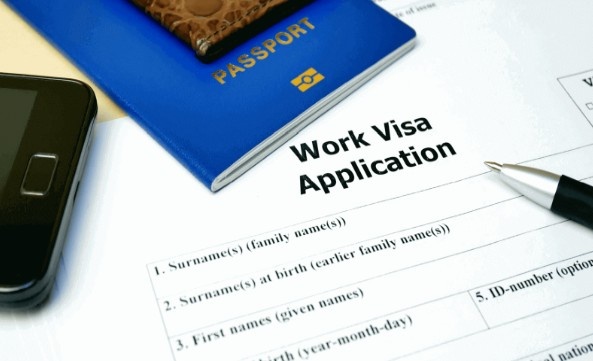
This visa requires extensive documentation, including employment contracts, company sponsorship letters, and educational qualifications.
It’s suitable for consultancy work, training assignments, or temporary positions with Indian companies.
The visa holder cannot change employers without proper authorization from immigration authorities.
7. Employment Visa (Medium)
The Employment Visa (Medium) is for medium-term employment, ranging from six months to one year, in India.
This visa category is designed for professionals who take up positions with Indian companies, multinational corporations, or government organizations.
It requires comprehensive documentation, including employment agreements, salary details, and company registration documents.
The visa permits multiple entries and can be extended for the duration of the employment contract, subject to the applicable requirements.
8. Employment Visa (Long)
Employment Visa (Long) is a long-term employment visa valid for one to five years, designed for professionals taking up permanent or long-term positions in India.
This visa requires detailed documentation, including employment contracts, educational qualifications, and company sponsorship.
It’s ideal for senior executives, technical experts, and specialists. The visa can be renewed based on continued employment and allows family members to apply for dependent visas.
9. Project Visa
Project Visa is specifically designed for individuals working on specific projects in India, including infrastructure development, technology transfer, or collaborative ventures.
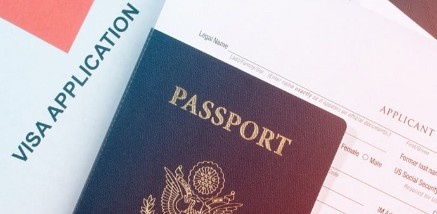
It is valid for a period ranging from six months to five years, depending on the project duration. This visa requires detailed project documentation, company sponsorship, and government approvals.
It’s suitable for engineers, consultants, and technical specialists working on time-bound projects with Indian organizations or international collaborations.
10. Student & Research Visa
Student & Research Visa is for pursuing educational courses at recognized Indian institutions or conducting research projects.
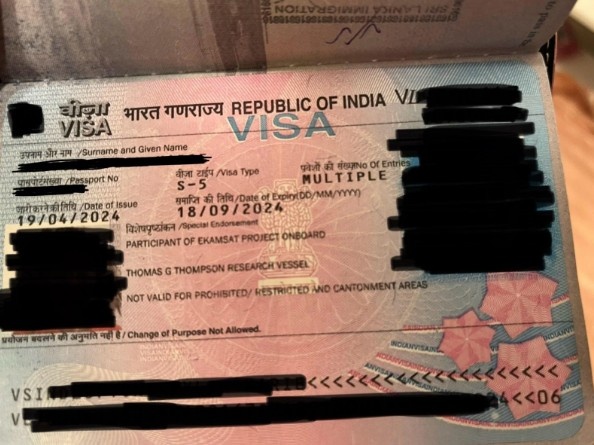
The Student visa validity corresponds to the course duration, with a maximum of five years. It requires admission confirmation from educational institutions, financial proof, and academic credentials.
This visa allows students to engage in academic activities, research projects, and internships related to their field of study at approved institutions.
11. Medical Visa (Short)
The Medical Visa (Short) is for individuals seeking medical treatment in India for a period of up to six months.

This visa includes provisions for accompanying attendants and allows multiple entries. It requires medical reports, treatment estimates from Indian hospitals, and financial proof for medical expenses.
The visa facilitates access to India’s advanced medical facilities and specialized treatments, making it popular for medical tourism and specialized healthcare procedures.
12. Medical Visa (Extended)
The Medical Visa (Extended) is an extended medical visa for treatments requiring a duration of six months to one year.
The visa is designed for complex medical procedures, long-term treatments, or recovery periods requiring extended stays in India.
This visa allows multiple entries and includes provisions for medical attendants.
The extended Medical Visa requires comprehensive medical documentation, treatment plans from recognized Indian hospitals, and proof of financial capability to cover extended medical expenses and accommodation.
You can also refer to this guide on the types of visas for a broader understanding of visa categories and their purposes
Applying For an Indian Visa for US Citizens (Step-by-Step Guide)
The application process is straightforward when you follow these systematic steps:
Step 1: Complete the Government Online Application Form
Complete all the required personal, passport, and travel details in the official Indian visa application form. Click here to fill out the form.
If you need help with form filling, VFS offers a paid assistance service.
Click here for form-filling assistance by VFS.
Step 2: Prepare Supporting Documents.
Gather all required documents according to the visa type and checklist, such as your passport, photographs, and other supporting documents.
Click here to view the checklist and required documents.
Step 3: Pay the Visa Fee and Send Your Application
Pay the applicable visa fee online as per your visa category. After payment, prepare your complete application package and mail it to the VFS Indian Consular Application Centre.
Ensure that you use the correct shipping label based on your address and consular jurisdiction.
Click here to pay the fee and get courier instructions.
Required Documents For an Indian Visa for US Citizens
Essential documentation ensures smooth processing of your visa application:
- Valid US Passport: Must have at least 6 months’ validity and two blank pages for a visa stamp.
- Recent Passport-Size Photograph: Color photo with a white background, taken within the last 6 months.
- Completed Application Form: All sections must be filled accurately with consistent information.
- Travel Itinerary: Flight bookings and accommodation details are recommended but not always mandatory.
- Supporting Documents: May include business letters, medical reports, or invitation letters, depending on the visa type.
- Financial Proof: Bank statements or financial documents showing you have sufficient funds for the trip.
To know more about entry rules and travel guidelines, check if Americans can travel to Russia in 2025.
Regular Visa vs E-Visa: Which Visa Is Better For USA Citizens Visiting India?
The choice between an e-Visa and a regular visa depends on your travel purpose and convenience preferences.
Here is the distinction between a Regular Visa and an E-Visa:
| Feature | E-Visa | Regular Visa |
|---|---|---|
| Application Mode | Online (no embassy visit needed) | Apply online, but a visit to the embassy/consulate is required |
| Processing Time | 3–5 business days | 5–10 business days (can be longer) |
| Validity | Up to 5 years (most often 1 year) | Varies by type (can be up to 10 years) |
| Entries Allowed | Double or Multiple | Multiple (depending on visa type) |
| Purpose | Tourism, Business, Medical | Tourism, Business, Medical, Employment, Study, etc. |
| Document Submission | Upload digital copies only | Submit physical documents |
| Cost | Generally lower | Generally higher |
| Stamp in Passport | No (you get a PDF to print) | Yes (visa stamped inside your passport) |
E-Visas are ideal for short-term visits, offering greater convenience, while regular visas provide longer validity and are mandatory for specific purposes, such as employment and education.
Also, find out if US citizens need a visa for the UK before planning your trip.
Indian E-visa Eligibility For US Citizens
As a U.S. citizen, you can apply for an Indian e-Visa if your travel purpose falls under specific categories. The Government of India has streamlined the visa process to facilitate easier access for U.S. travelers.
Eligible Categories:
- E-Tourist Visa – For sightseeing and leisure.
- E-Business Visa – For business meetings and activities.
- E-Medical Visa – For medical treatment in India.
- E-Medical Attendant Visa – To accompany a patient.
- E-Conference Visa – For attending conferences/seminars.
Key Points:
- Apply online with passport and photo.
- Processing usually takes 3–5 business days.
- Stay valid for 30 days, 1 year, or 5 years.
- Entry allowed through designated airports/seaports.
Special Travel Considerations for U.S. Citizens
Traveling to India involves a few unique requirements for U.S. citizens. Understanding visa rules, restricted areas, and special cardholder privileges can make your journey smoother and hassle-free.
OCI and PIO Cardholders
- OCI holders enjoy long-term residency and multiple entries.
- PIO cards are merged with OCI; conversion is recommended.
- Makes travel and visa processes easier in India.
Restricted & Protected Areas
- Certain regions require Protected Area Permits (PAP) or Restricted Area Permits (RAP).
- Examples: Arunachal Pradesh, Sikkim, Jammu & Kashmir, Andaman & Nicobar Islands.
- Apply in advance and carry copies during travel.
What Are the Visa Validity and Entry Rules For US Citizens?
Understanding visa validity and entry restrictions prevents travel complications. Most tourist and business visas offer multiple entry privileges, allowing you to enter and exit India several times within the validity period.
Visa duration ranges from 30 days for short-term e-Visas to 10 years for long-term regular visas. However, each individual’s stay is typically limited to a maximum of 180 days. Overstaying your permitted duration results in penalties, deportation, and potential future visa restrictions.
Always track your entry and exit dates carefully to ensure compliance with immigration regulations.
How to Extend or Renew an Indian Visa
If you are currently an American citizen in India and need to stay longer than your visa, you may be able to extend or renew your Indian visa, depending on your visa type. What you should know here:
- Tourist and e-Visas are non-extendable. You’ll need to leave India and apply again from the U.S.
- Extensions are possible for long-term visas like student, medical, or employment, under valid reasons.
- Apply through the FRRO, either online via the e-FRRO portal or by visiting a local office.
- Required documents include your passport, current visa, reason for extension, and related proof.
- Apply before expiry to avoid penalties, fines, or travel restrictions.
- Approval depends on case review and is not guaranteed.
What If Your Visa Application To India Gets Rejected?
Visa rejection can occur due to incomplete documentation, inconsistent information, or failure to meet eligibility criteria. Common rejection reasons include insufficient financial proof, unclear travel purpose, or previous immigration violations.
If your application is rejected, you can reapply after addressing the specific issues mentioned in the rejection notice.
Review all documentation thoroughly, ensure accuracy in personal information, and provide comprehensive supporting documents.
Consider consulting with visa experts or immigration attorneys for complex cases. Some rejections may require waiting periods before reapplication, so plan accordingly and apply well in advance of your intended travel dates.
Travel Tips & Common Mistakes to Avoid When Visiting India
Successful travel preparation extends beyond visa approval:
- Weather Considerations: Research the seasonal weather patterns for your destination and pack appropriate clothing for your travel dates.
- Accommodation Bookings: Secure hotel reservations in advance, especially during peak tourist seasons and festivals.
- Health Precautions: Consult healthcare providers about recommended vaccinations and carry necessary medications.
- Currency Exchange: Familiarize yourself with Indian currency and exchange rates for budget planning.
- Cultural Awareness: Research local customs, dress codes, and etiquette to ensure respectful interactions.
- Documentation Copies: Carry multiple copies of your passport, visa, and important documents stored separately.
- Travel Insurance: Purchase comprehensive travel insurance covering medical emergencies and trip cancellations.
After Arrival in India: Immigration, Biometric Registration & Entry Guidelines
Upon arrival in India, US citizens should follow these steps and guidelines:
- Airport Immigration Clearance: Present your passport, visa, and supporting documents for verification.
- Biometric Data Collection: Depending on your visa type, fingerprints and photographs may be taken.
- Document Preparation: Carry printed copies of your visa approval, travel itinerary, and any other essential documents.
- Travel Insurance Recommendation: Ensure you have valid travel insurance covering medical emergencies during your stay.
- Compliance with Local Rules: Follow customs regulations, respect restricted areas, and obtain any regional permits if required.
- Stay Informed: Check official guidelines or consulate notices for updates on arrival procedures.
Related Read:
Final Take: Everything US Citizens Should Know About Indian Visas
Getting an Indian Visa for U.S. citizens is easier than it seems once you understand the requirements and follow the correct steps. Choosing the visa type that matches your travel purpose is essential for a smooth journey.
Be sure to gather all required documents and apply only through official government portals, avoid shortcuts or unofficial services. To ensure a stress-free experience, start your application at least 2–3 weeks before your departure, allowing enough time for processing and avoiding last-minute issues. With careful planning, your trip to India can begin seamlessly.
FAQs
A 30-day e-Tourist Visa for U.S. citizens costs USD 25 during peak season (July to March) and $ USD 10 during off-peak season (April to June).
U.S. citizens holding an Overseas Citizen of India (OCI) card can stay in India indefinitely with no restriction on visit duration.
Arriving in India without a valid visa can lead to denial of entry and possible deportation by immigration authorities.
An Indian e-Visa usually processes in 3–5 days, while a regular visa may take 10–15 days. Apply early to avoid delays.
Foreigners can stay up to 180 days in a calendar year on an e-Tourist or regular Tourist visa. Entry via land borders is not allowed on these visas.



